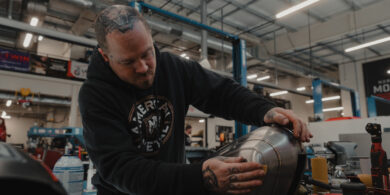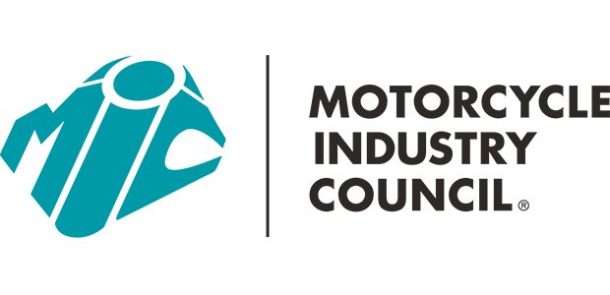SNOWMOBILE – Yamaha reveals Planned 2006 Sled Models
Japanese snowmobile manufacturer Yamaha has been bold in its direction with the four-stroke snowmobile. For 2006, the word “bold” takes on a new meaning, describing a new four-stroke engine, 11 new models, four new suspensions, and updates to most returning models. Information on the 2006 lineup was released to dealers at a February 7 meeting.
Yamaha will also expand its marketing effort for 2006.
This includes greater distribution of its product DVD through direct mail and as a product brochure insert, said Rob Powers, Yamaha spokesman. There also are plans for more television advertising in select markets, and there will be more spring consumer show locations in the east and midwest, he said.
The remaining two-strokes, the SXViper Mountain, the SXVenom, the SXVenom ER and the Venture 600 were so downplayed in the Yamaha presentation, it was as if they didn’t exist.
The near-elimination of the two-stroke engine is just as scheduled, said Powers. “The 2003 lineup started four-stroke revolution,” he said. “This is just another part of overall plan.”
By Yamaha’s testing, the four-stroke fleet will meet the EPA emissions requirements for 2006, though none of the engines have been certified by the agency. “It was never a part of our plan to bank the credits, so we’re not going to certify the engines until it’s mandatory,” Powers said.
Gone, however, is the leader of Yamaha’s four-stroke effort. After its three-year stint, the RX-1 is done, replaced by the new Apex series.
Powers makes it clear that the Apex machines are not RX-1s in disguise, hence the new identity. “We wanted the public to know it’s a new model,”he said.
The Apex comes in three suspension variations: the Apex ER, the Apex GT (groomed trail), and the Apex RTX (rough trail). All three share the same new engine configuration, called the Genesis 150 FI. The “150” indicates horsepower; the FI is for fuel injection.
Differences between the Genesis Extreme include lighter components, a radiator cooling system Bosch fuel injection and revised intake and exhaust porting. In the driveline, there’s a shorter gear ratio and different clutch weights.
The chassis is now called Deltabox II. Handlebars are raised and hooked, and the driver sits 6 inches forward, compared to the Deltabox design. It uses the same front geometry as the 2005 RS Vector. Suspension componentry varies among the models from SOQI-brand shocks on the ER to the GYT-R piggyback remote reservoir on the GT to Fox FLOAT shocks on the RT.
The Apex ER is a claimed 11 pounds lighter than the RX-1 and the RT is a claimed 14 pounds less. than the RX-1.
The RXWarrior also disappears for 2006, in favor of the new Attak. It uses the same Genesis 150 FI engine as the Apex series and adopts the same ergonomics from the Deltabox II. The Attak is a claimed 23 pounds less than the RX Warrior.
A version of the Mono-Shock RA is on the Attak. Rather than extend the rails and bolt it into the longer tunnel, the Attak’s version has new 136-inch rails, rear suspension arm geometry different from the short-track version and a longer control rod.
THE 120 HP CLASS
Yamaha is hitting the popular 120 hp class with several new models with the same Genesis
120 engine it introduced in 2005.
In response to complaints of an inadequate rear suspension on the RS Vector line, Yamaha will build a new machine called the Nytro and Nytro ER, complete with a beefed-up rear.
The Nytro features stand-up riding ergonomics; an optional, aggressive decal package and color scheme; and suspension calibrations to match. It will use Fox FLOAT shocks in front and a new
torsion spring rear skid called the ProActive CK. This rear should offer better preload. The rear shock will be a piggyback KYP with a compression clicker.
Other chassis changes over the 2005 RS Vectors is a new brake/disc combination and a magnesium chain case cover that combine for a 2.5-pound weight loss.
The standard RS Vector will remain unchanged for 2006. It does get a sibling, though, in the Vector GT, which will be marketed to the groomed trail rider. It will include new convenience features, such as a 12-volt accessory plug and a standard handlebar bag. The RS Vector ER will come back with the Mono-Shock RA rear suspension,a new brake and magnesium chaincase cover.
The RS Rage, with the136-inch track, now has the same rear skid as the Attak. The machine is 17 pounds lighter than the 2005 version, and gets improved stopping power from a four-piston brake and new disc.
The two-up RS Venture touring mount has a new, taller windshield for improved protection. The easy-adjust rear suspension block changes the machines intent from solo to two-up touring and the rear seat removes easily for more solo touring cargo space.
MOUNTAIN SLED UPDATES
The Apex Mountain uses the same 150 FI engine as its trail counterpart, as well as other features such as new gearing, updated rider position, styling and instrumentation from the Deltabox II chassis.
The key differences between the trail and mountain versions are the mountain-specific features. The floorboards are wider, the handlebars are taller and hooked for improved comfort and control. The increased floorboard area has new traction for limited slip and to avoid snow build up. There is also
a new rear mountain rack that increases storage space and offers more function, and the exhaust tips are baloney cut to keep heat away from your packed lunch.
The tunnel is a new, one-piece design. Previous mountain RX chassis used the standard short-track tunnels with a riveted extension. Underneath the new tunnel is a new 16- by 162- by 2.25-inch Camoplast track.
The new RS Vector Mountain SE, with
the Genesis 120 engine, 16- by 162- by 2.25-inch track and a Pro Mountain 162 suspension that offers increased weight transfer from previous designs.
The RS Vector Mountain returns for 2006 with a few changes. A new seat design, with storage, is taller for easier stand-up riding and to meet the new handlebar position. Taller than in 2005, the new handlebars are wider, hooked and positioned to improve mountain riding ergonomics.




